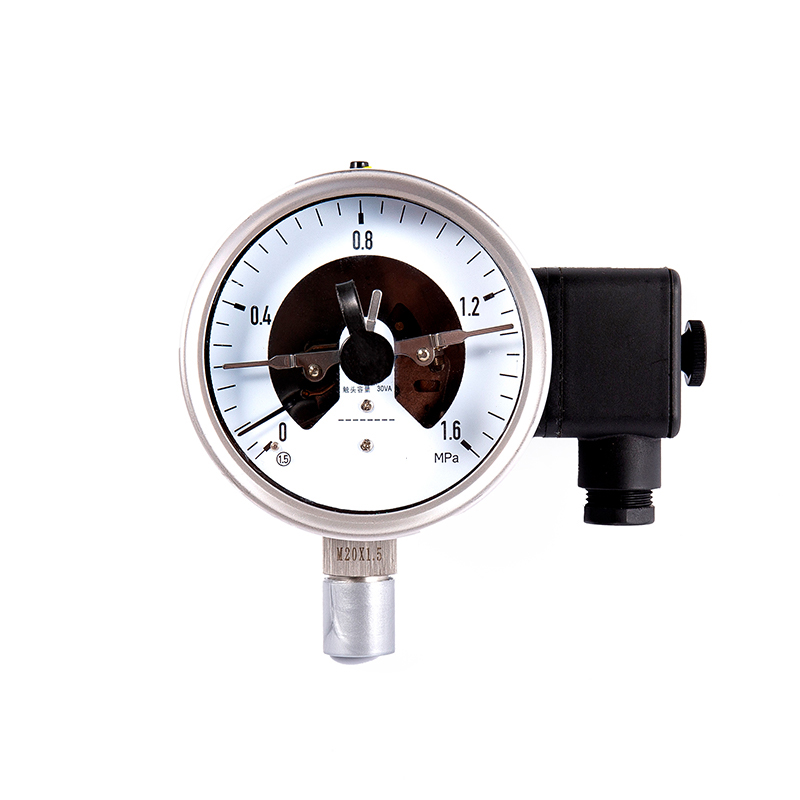YP series diaphragm pressure gauges
Cat:Pressure Gauge
◆ Model: YP100-L YP150-L YP100-F YP150-F ◆ Application: YP series instrument diaphragm and structura...
See DetailsThe pressure gauge is an important instrument for measuring pressure. During maintenance, safety, accuracy and reliability must be ensured.
The following are the key precautions during the maintenance process:
Safe Working
1. Power Outage and Pressure Release
Before the maintenance, the power of the measured medium must be cut off, and the pressure in the pressure system must be drained to prevent medium leakage or pressure shock during the maintenance process, which could cause injuries to personnel.
2. Enviroment Inspection
For pressure gauges that may contain toxic, harmful or explosive media, corresponding measures should be taken. Example, wear protective gloves, masks, etc., and if necessary, conduct ventilation and replacement.
Disassembly and Installation
1.Disassembly Safety
When disassembling a pressure gauge, use appropriate tools to avoid damaging its connecting components or head.
2. Installation Safety
During installation, ensure that the pressure gauge is installed in a location that is easy to observe and operate, and avoid vibrations and high-temperature environments. At the same time, ensure a secure connection to prevent leaks.
Internal Structure Inspection and Maintenance
1.Movement and Transmission Mechanism
After disassembling the movement, clean the internal dust and oil stains, and check for wear, rust, or loosening of components such as gears, levers, and spring tubes
Test the flexibility of the transmission mechanism: manually gently push the pointer to observe if its movement is smooth, if back to zeroing is accurate, and if there is any jamming.
2. Sensitive Component Inspection
For spring tube pressure gauges,it is necessary to check for cracks ,deformation , or leaks in the spring tube,and perform a withstand voltage test if necessary.
Sensitive components of diaphragm or bellows pressure gauges need to be checked for damage,aging, and tight sealing edges.
3. Electrical Connection(If for electrical contact pressure gauges,etc.)
Check the electrical contact pressure gauge are oxidized, corroded, if the terminal blocks are loose, and if the insulation layer is damaged
Test if the action logic of the electrical contact pressure gauge is normal, such as whether the alarm or control functions are accurately triggered
Calibration and Debugging
1. Calibration Equipment and Conditions
Calibrate using high-precision standard pressure gauges (with a precision higher than that of the test gauge grade 1-2) or a pressure calibrator to ensure the calibration environmental temperature corrosion requirements (typically 20±5℃)
The pressure gauge after maintenance needs to be calibrated and can be compared using standard pressure sources with precise pressure gauges.
2. Debugging and Adjustment
Adjust according to the precision requirements of the pressure gauge to ensure that its measurement errors are within the allowed range.
Installation and Acceptance
1. Correct Installation
Reset the pressure gauge according to the marking during disassembly to ensure it is intalled in the correct direction is correct (usually vertical), with reliable joint sealing to prevent leaks.
For threaded connections, appropriate sealing materials (such as polytetraethylene tape) need to be used, but it is important to ensure that these materials do not enter the pressure gauge to block the passage.
2. Trial Operation and Acceptance
After installation is completed, slowly increase the pressure to the working pressure, and observe whether there is any leakage at the gauge body and joints, and whether the pointer is stable.
Conduct a trial run of at least 30 minutes to check whether the indication of the pressure gauge is accurate during operation and whether there are any abnormal fluctuations or noises.
For legal measuring instruments, the verification qualification labels should be re-affixed, and the maintenance date, calibration results and the time of the next verification should be recorded.
Special Considerations for Pressure Gauges of Special Types
1. Oxygen Pressure Gauge
Do not come into contact with oils; maintenance tools must be dedicated and clean with no oil stains to avoid explosion risks.
2. Explosion-Proof Pressure Gauge
Ensure that the flameproof enclosure and sealing parts are in good condition. After maintenance, the explosion-proof performance must be restored. It is strictly prohibited to open the cover for inspection while powered on in an explosive hazardous environment.
3. Digital Pressure Gauge
Check the battery power and the normality of the display screen to avoid circuit faults caused by a humid environment. Calibration should be done using a digital calibration device.
By strictly adhering to the above precautions, the accuracy, safety and reliability of the pressure gauge after maintenance can be ensured, thereby guaranteeing the normal operation of industrial production and equipment monitoring scenarios.
If you still want to know more about pressure gauges and related knowledge, you can leave a message or visit the website's news section to check it out.
